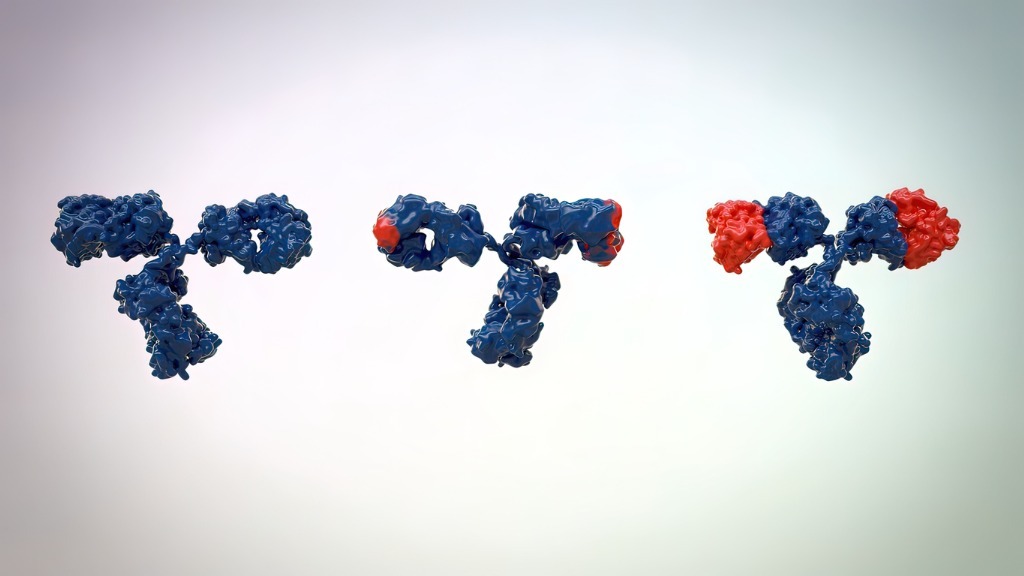Twist-Developed Antibody Shows Promise Against Congenital Hyperinsulinism

In a recent article published in Diabetes, researchers from Twist Bioscience, Children’s Hospital of Philadelphia (CHOP), and the University of Pennsylvania described the development of a novel therapeutic antibody that targets the glucagon-like peptide 1 receptor (GLP-1R). Among many potential applications, this antibody (TB-222-023) may have a particularly pronounced impact in the treatment of congenital hyperinsulinism—a rare condition that strikes newborns and children.
“Our antibody demonstrates potent activity against GLP-1R that appears to be superior to that of the clinically approved peptide GLP-1R antagonist, Extendin,”said Aaron Sato, Ph.D., Twist’s chief scientific officer. Sato is co-senior author on the study with Diva De León, M.D., who directs the Congenital Hyperinsulinism Center at CHOP. “We also observe strong efficacy in both an in vivo knockout model and ex vivo in pancreatic islets from human pediatric patients.”
A potent GLP-1R antagonist could have application in the treatment of congenital and acquired hyperinsulinism, in which patients overproduce insulin and subsequently experience dangerously low blood sugar levels. If left untreated, this can cause brain damage and death. Though considered a rare disease, hyperinsulinism is the most common cause of hypoglycemia in infants and children.
Some patients with hyperinsulinism can be treated using diazoxide, which reduces insulin secretions. However, patients with certain mutations that affect a potassium channel (KATP-HI) do not respond to the drug. For them, the most effective treatment is to remove most or all of their pancreas.
GLP-1R has been a target of interest in hyperinsulinism for some time. Exendin (9-39) is a truncated peptide that antagonizes GLP-1R and has shown to be an effective therapeutic agent for hyperinsulinism. However, Exendin (9-39) exhibits a very short half life, meaning patients would need multiple doses per day to maintain therapeutic benefit. Relative to peptides, antibodies typically display longer half lives and fewer side effects. Therefore the development of a first-in-class GLP-1R antagonistic antibody could be a significant improvement over current peptide-based therapeutic modalities 1.
To develop this antibody, Twist and CHOP combined their expertise. The De León lab had developed mouse and ex vivo models that could improve preclinical decision making, facilitating antibody screening and better identification of effective GLP-1R antagonists. Twist had previously investigated GLP-1R while developing and validating its G protein-coupled receptor (GPCR) antibody library. GPCRs are often targeted for drug discovery, but successfully developing antibodies against these receptors is a considerable challenge that many in the industry fail to overcome. Through the use of large-scale DNA synthesis, biopanning, and considerable expertise, Twist has molded its GPCR antibody library into a powerful resource that can help unblock the industry, ultimately with the goal of enabling the discovery and development of effective anti-GPCR therapeutics.
The promise of Twist’s GPCR antibody library came to fruition in this project. Twist’s industry leading DNA synthesis platform enabled the creation of a GPCR-focused phage display library, offering more than 1010 single-chain variable fragments that could potentially bind and antagonize GPCR receptor function, including GLP-1R. The study library design was inspired by a previous Twist antibody (TB-001-003), which was discovered from the GPCR-focused library and had shown great early promise at inhibiting GLP-1R. The research team had been eager for an opportunity to further optimize TB-001-003 using the Twist antibody optimization platform to discover an optimized candidate, now referred to as TB-222-023
In addition, Twist’s DNA synthesis platform gave the researchers precise control over antibody construction and was essential to the project’s success.
“The library was really instrumental in helping us to find an antagonist for this receptor, specifically one that blocks GLP-1 peptide’s ability to bind and activate its receptor,” said Sato. “Because of our synthetic DNA capabilities, we are able to design unique motifs into the antibody loops that help to form a kind of inhibitory cap that blocks the receptor’s peptide from binding. That was really critical to the overall activity of the antibody.”
The team tested the antibody in a KATP-HI mouse model, cell models, and pancreatic beta cells from patients. The results showed TB-222-023 is more than ten times more potent and has a much longer half-life than the existing peptide inhibitor—the Exendin-(9-39)—as well as offering a novel strategy to treat congenital hyperinsulinism.
The evidence presented in this paper—which spans in vitro, in vivo, and primary ex vivo cell models—could help propel the TB-222-023 antibody into clinical trials for children with diazoxide-resistant hyperinsulinism. The team is now reaching out to potential biopharma partners who may be interested in advancing this molecule into clinical trials.
“We have some really fantastic data we were able to generate with Diva De León at CHOP,” said Sato. “This whole project was enabled by their great models and our ability to produce this unique antibody library. We were also able to leverage the Twist Antibody Optimization (TAO) algorithm to boost the candidate’s potency. It's a nice proof of concept paper for these technology platforms, and I believe we may have developed a strong potential drug candidate that could really improve outcomes for patients with congenital hyperinsulinism.”
*Twist Bioscience products are for research use only, not for diagnostic procedures
参考文献
- Peterson, Sean M, et al. “Optimization of a Glucagon-like Peptide 1 Receptor Antagonist Antibody for Treatment of Hyperinsulinism.”Diabetes, 26 June 2023, https://doi.org/10.2337/db22-1039.
いかがでしたか?
気に入った
気に入らなかった
大好き
驚かされた
面白かった
